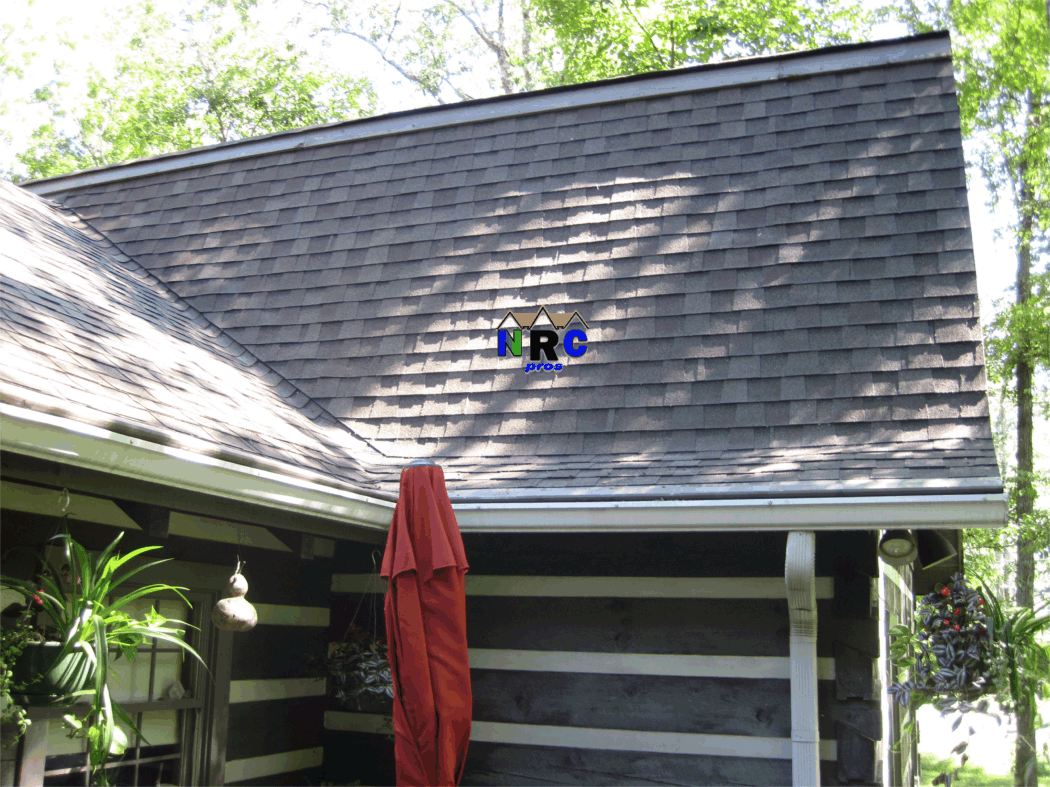



Serving Middle Tennessee
Serving middle Tennessee
for more than fifteen years
What is causing the roof staining?
A Blue Green Algae known as Gloeocapsa Magma grows on roofs. After it grows it then decomposes leaving stains. It holds moisture, which accelerates its growth. Humid environments are ideal for these algae. As you can see by the map, all areas of the United states are affected. The green areas illustrate the areas that are completely saturated. In these areas you will see house after house with thick black stains that have completely covered the roofs. Algae staining is typically heavier on the north side of a roof. The other areas of a roof can also be affected depending on conditions, surrounding trees and if it is allowed to spread.

Modern asphalt shingles
Several years ago shingles were true asphalt shingles. They were made of asphalt-impregnated felt, which made them heavy. These types of shingles didn’t have the algae problem we experience with the new shingles manufactured today. Algae doesn't thrive on asphalt so why are my asphalt shingles covered in Algae? With the rise of petroleum prices, shingle manufacturers had to find a less expensive way to manufacture them. They chose to make shingles with a fiberglass backing for durability. Fiberglass is light so they needed added weight for stability. They started using ground up limestone as a filler to add weight. Algae feed on the limestone, which is the reason for the widespread appearance of algae stains. The only asphalt is a thin layer to hold the stones in place.
Wind and small animals carry Algae spores from roof to roof. Once the tiny spores start to multiply, a roof can go from clean-looking to badly stained in a matter of a year or two. Shingles that remain covered in Algae for long periods of time are more susceptible to extreme weather conditions. Shingles will then start to curl up making them easily blown off by wind. Cleaning a roof every four or five years will relax the shingles and prevent most of these issues. An important part of the cleaning process is killing the Algae spores so the staining doesn't quickly return.
What happens when Lichen takes over


The first level of roof staining is Algae. Algae grows and dies quickly. It decomposes and leaves ugly black stains. If the Algae is not removed, the second level begins which is Lichen. Lichen is a composite organism that evolves from Algae. It starts out as a moss. Moss is longer lived than Algae and will spread. It doesn't decompose and will take over a roof. Instead of just having stains, the roof will now have a thick moss covering. Moss can be removed leaving behind a clean roof but the process takes little longer.

The third level is a much stronger strain of Lichen. Once this strain takes over, the root systems which allow the previous strain to survive on moisture are gone and the organism produces its own food by photosynthesis using energy from the sun. It will outlive the roof. It takes on the appearence of dried paint. Although this strain is more invasive and difficult to remove than moss, it can still be removed leaving behind a clean roof. The expertise involved with all three levels of staining is to separate the Algae and Lichen from the roof without using damaging high pressure to blast the stains away. The process used by Nashville Roof Cleaning is the most effective and least invasive utilizing a light wash and light rinse cleaning method with immediate results.
If maintained properly, asphalt shingles, for many reasons, still remain the most affordable option for roofing. This means the problem with Algae growth will be with us for many years to come. Companies have been scrambling to cash in on this widespread problem and develop a mild formula that will effectively get rid of the staining with immediate results. The race is to develop a product that can be sold over the internet and over the counter. By doing this, they will be able to sell this product to anyone and ship to any location. As of yet, we have no winners. Most of the products require the use of damaging high pressure water to blast the stains away or spray a product on a roof and wait weeks for minimal results. There is only one process that offers immediate results without the use of high pressure water or scrubbing. This process is recommended by Roofing Manufacturers and does not utilize over the counter cleaners.